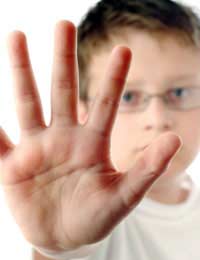What is Stranger Danger

Whilst attacks by strangers on children may be rare, they are every parent’s worst nightmare. Making sure children are aware of the dangers that strangers can present without scaring them is a fine balancing act. If children are to spend any time at all out of their parents’ sight teaching them about Stranger Danger may give some peace of mind.
What is Stranger Danger?
Stranger Danger has passed into popular usage as the shorthand for the rules and safety tips children can be taught to protect themselves from adult strangers. Adages such as, “Never except sweets from a stranger” form a central part of the concept of Stranger Danger. Crucially children need to understand that a person they do not know can be dangerous even if they are female or look “nice”.At What Age Do Children Need to Know About Stranger Danger?
Children as young as 3 or 4 may begin to have an awareness of what it means for someone to be a stranger and to understand why they should not trust them. Some nurseries and pre-schools may provide preliminary training on this subject. Parents may be concerned about frightening their children by discussing this topic at too early an age. However, most children are now bombarded with media images of missing children and may be reassured by a calm, rational approach to a potentially terrifying subject.Teaching Children About Stranger Danger
Basic Stranger Danger rules include:- Never accept gifts or sweets from a stranger.
- Never get in a car with a stranger.
- Never go anywhere with a stranger.
- Never go off on your own without telling your parents or a trusted adult.
Many local police forces offer Stranger Danger courses and will come into primary schools to teach them. The courses may focus exclusively on the risks of attack or abduction by a stranger or may be included in wider ranging lessons which incorporate general health and safety awareness. Methods used often include role play, games and visual materials.
Safe People and Places
Stranger Danger is not just about teaching children who or what to avoid but also includes positive rules so that children know how to keep themselves safe. For example:- Knowing who they can trust if they need help - such as a uniformed police officer or a teacher.
- Having the confidence to trust their instincts if they have a bad feeling about a place or person.
- Being aware of their surroundings;
- Learning to be assertive;
- Knowing that they should tell a trusted adult if they have been approached by a stranger.
Beyond Stranger Danger
In today’s world teaching children not to accept sweets from a stranger is only a small part of keeping them safe. Children today tend to have many more belongings than children had twenty, or even ten, years ago making them vulnerable to street theft or mugging. If a child is going out into the world with a new mobile phone and an iPod he must know how to protect himself, and his property, from other people.The threat posed on the internet, or even by other children, is almost certainly far greater than that posed by the traditional bogeyman in a dirty raincoat. Indeed, the fact remains that children may be at greater danger from people they know than they are from the stranger of our nightmares.
Business Energy With a Difference
If you are looking for business energy or need advanced solutions like remote energy monitoring, new supplies, downgrading or upgrading capacity, have a no obligation chat with Purely Energy.
To find our more get in touch here. or call 0161 521 3400.







